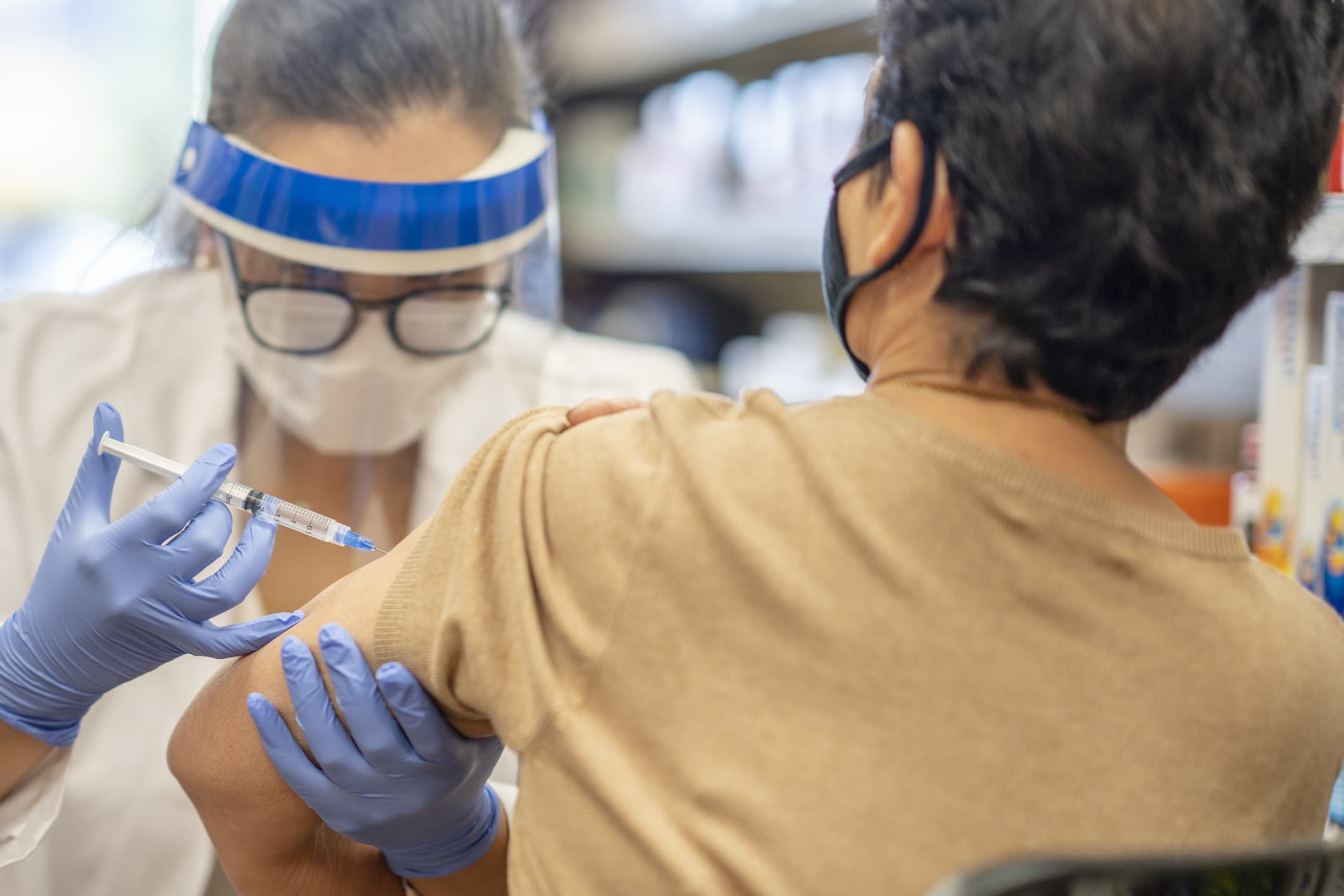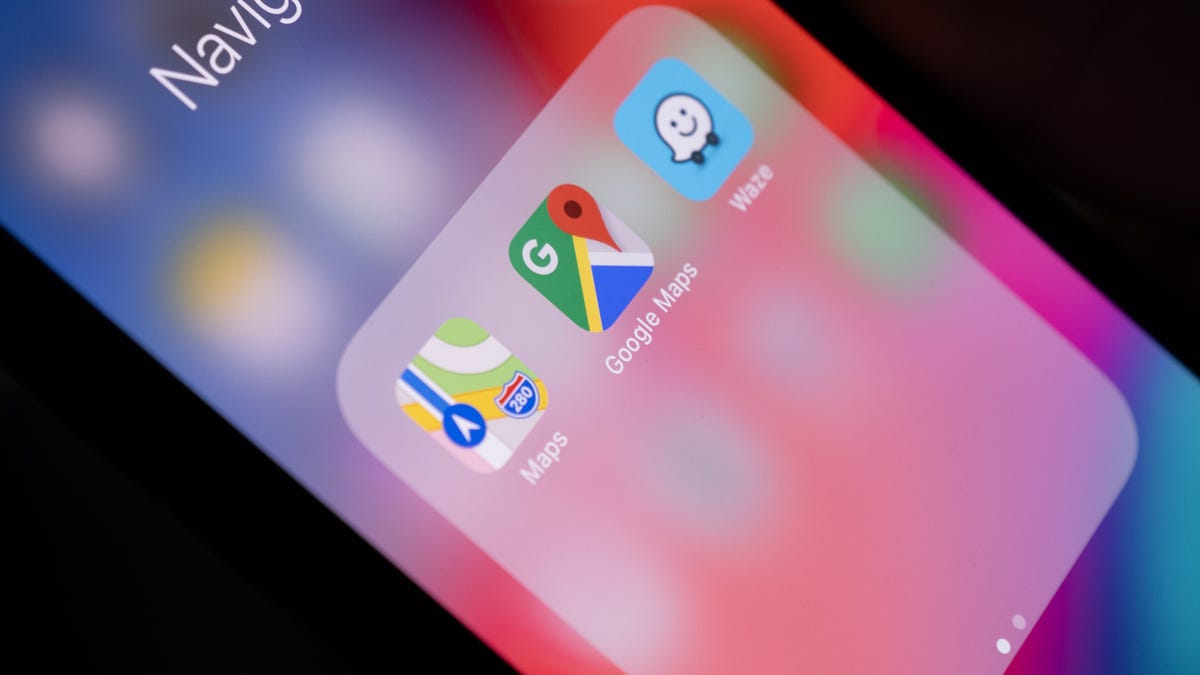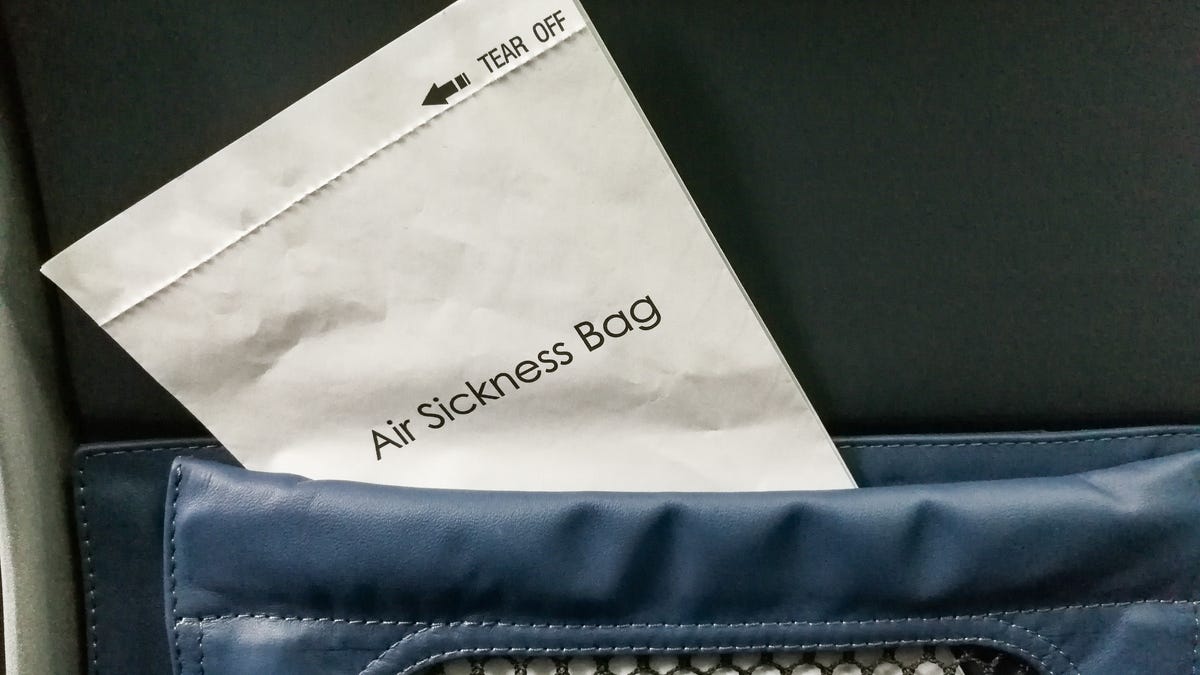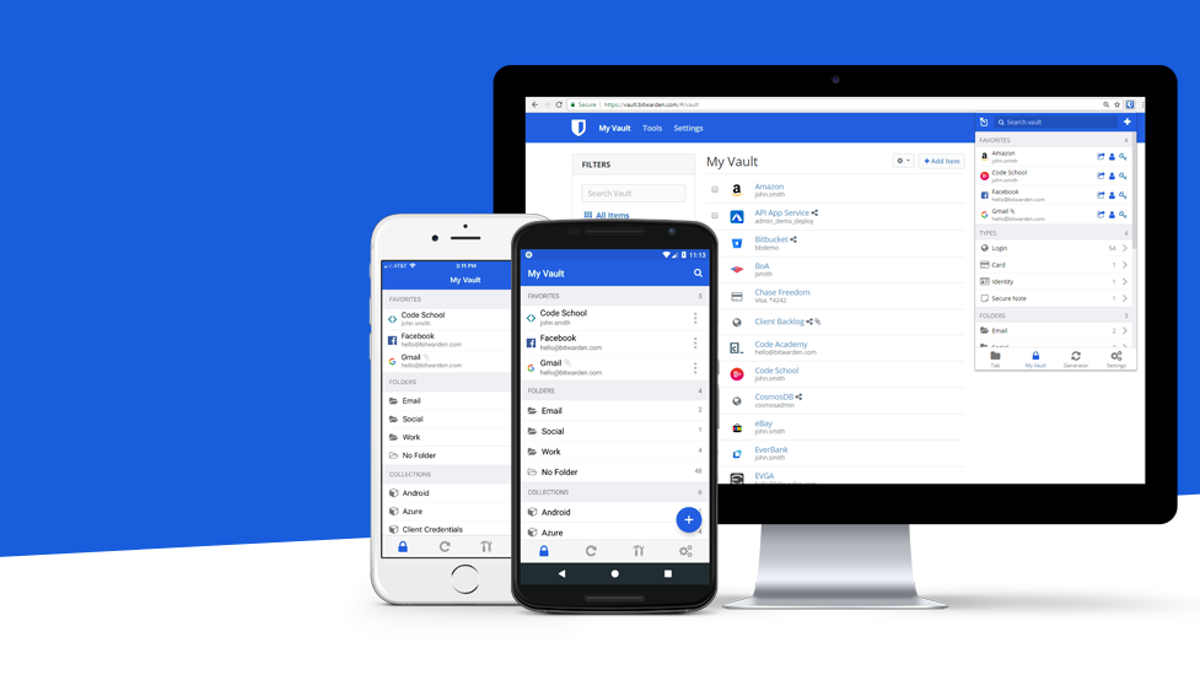Welcome to NerdWallet’s Smart Money podcast, where we answer your real-world money questions.
This week’s episode starts with a discussion of money news you might have missed, including changes to the rules on flexible spending accounts and college financial aid.
Then we pivot to this week’s question from a listener, who asks, “What I wanted to know is what this 50/30/20 budget thing is. How is that broken down?”
Check out this episode on any of these platforms:
Our take
The 50/30/20 budget suggests limiting your “must have” expenses to 50% of your after-tax income, leaving 30% for wants and 20% for savings and extra debt payments. Your after-tax income is typically your gross pay minus income and payroll taxes (the money that goes to Social Security and Medicare).
Must-have expenses typically include shelter, food, transportation, utilities, insurance and minimum loan payments. Any expense that can’t be put off without dire consequences would be a must-have. You may have other expenses you see as non-negotiable, such as charitable contributions or tithing. You can make those “must haves” if you’re willing to cut back in other areas.
Wants usually include clothes, vacations, eating out, entertainment — anything that’s nice to have but that can be cut back in an emergency without serious repercussions.
The final category includes saving for retirement, emergencies and other important goals as well as extra payments intended to pay down the principal of what you owe ahead of schedule.
Keeping your must-haves to 50% of after-tax income can be difficult, especially if you live in high-cost areas. The payoff is a flexible budget that allows you to pay your bills, have some fun and save for the future. Plus, you’ll be in a better position to cover your bills if you lose a job or suffer another financial setback.
Our tips
Know the basics. With the 50/30/20 budget, half of your after-tax income is for necessary expenses, 30% is for wants and 20% goes to extra debt payments and savings.
Explore the gray areas. Use your values to find the line between what’s truly a need and what is more of a want.
Be flexible. Realize that your budget may change over time as your personal and financial situations evolve.
Have a money question? Text or call us at 901-730-6373. Or you can email us at podcast@nerdwallet.com. To hear previous episodes, return to the podcast homepage.
Episode transcript
Liz Weston: Welcome to the NerdWallet Smart Money podcast, where we answer your personal finance questions and help you feel a little smarter about what you do with your money. I’m Liz Weston.
Sean Pyles: And I’m Sean Pyles. If you want your money questions answered on a future episode, then turn to the Nerds. Call or text us on the Nerd Hotline at 901-730-6373. That’s 901-730-NERD. Or email us at podcast@nerdwalllet.com.
Liz: And hit that subscribe button to get new episodes delivered to your devices every Monday. If you like what you hear, please leave us a review.
Sean: This episode, Liz and I are answering a listener’s question about how to use the 50/30/20 budget. But first, Liz and I are going to do a new occasional segment that we’re calling, In Case You Missed It Money News, where we highlight notable developments that might have slipped under your radar. The appropriations bill that was signed at the end of last year at the same time as the COVID relief bill is a perfect example of this. It contains some important changes to employee benefits and to college financial aid that haven’t really gotten a lot of attention.
Liz: Yeah, I think because it was signed right at the end of the year and we were all consumed with other things, it really did pass under a lot of people’s radar. But one big change has to do with flexible spending accounts, and it should come as very welcome news to all the parents out there who had child care funds piling up that they couldn’t use because of the pandemic. I guess we should talk first about what an FSA is, what a flexible spending account is.
Sean: Yes.
Liz: So, a flexible spending account is something your employer offers and it allows you to put aside pre-tax money to cover certain expenses. There can be an FSA for health care expenses and then one for child care expenses. And the child care one was a particular issue last year because so many child care options were closed. And, normally, it’s a use-it-or-lose-it situation, if you don’t use the money by a certain point, you lose it. Now, with the new bill, there are rollover options, so the money you didn’t use in 2020 can roll over into 2021, this year. The money you put in this year can roll over into 2022. So that’s a really good option if you’ve got money just sitting there.
Sean: OK. That’s interesting, because one of the key differences between an FSA and an HSA, a health savings account, is that with an HSA, you can roll over the money year after year.
Liz: Yes.
Sean: And now it seems like the lines are blurring a little bit, right?
Liz: Yeah. And this is a temporary change, I think. But it is one that could be super helpful. And also, this is something the employer has to do. It isn’t automatic. But I can’t imagine employers would hold off on this. It really doesn’t cost them anything to do. I mean, there might be a small administrative charge, but it really is a good thing to do. So if your employer doesn’t know about this, make sure to tell them about it and ask them to make that change.
Sean: OK, so that actually was my question. I was going to ask how folks can take advantage of this change. And it seems like the answer is lobby HR.
Liz: Yes, exactly. It may have happened already, but if it hasn’t, make sure you contact HR.
Sean: OK. And beyond that, is there anything that folks need to do on their own?
Liz: No. Basically, these are great programs, these are great ways to save on taxes, and people who are W-2 employees don’t have a lot of ways to save on taxes. So, if you have the chance to use one of these, it’s usually a great idea.
Sean: All right.
Liz: Oh, and I should add, this is true for the medical expenses as well as the child care. So it applies to both, it’s just that I think a lot more people have child care money just sitting there that they weren’t able to use.
Sean: Right. Day care was not as much a thing in 2020 as we maybe hoped it would have been.
Liz: No.
Sean: All right. Well, let’s talk about the other change now, and this had to do with the Free Application for Federal Student Aid, or FAFSA as it’s known, that people fill out for college. So it’s actually getting simpler with the changes that happened, and that’s some very good news. And there’s also some good news in there for generous grandparents and other relatives.
Liz: Yeah, I was actually surprised at how much had changed with the FAFSA, because over the years it’s just gotten more and more complicated.
Sean: Mm-hmm.
Liz: And so one of the big changes is now there are only 36 questions, which seems like a lot until you know that there were 108 questions before.
Sean: Ugh.
Liz: Yeah. So many, many, many fewer questions. Also, your tax returns can now be uploaded automatically. So there aren’t any tax questions. They got rid of that. Interestingly, they got rid of a question about drug convictions.
Sean: That’s good news.
Liz: Yeah, that’s a real move forward, because as we know, there have been over-policed populations who were much more likely to wind up with a drug conviction, and this just takes that off the table. It’s no longer relevant. I don’t know that it ever was relevant, but it certainly isn’t anymore.
Sean: Right.
Liz: And you mentioned grandparents, so here’s the other big change. There aren’t any questions about whether grandparents or other generous relatives have given money to the student. And in the past, that was counted. Any gifts to the student was counted as the student’s income. So it could really impact their financial aid that could penalize them by up to 50% of the gift.
Sean: Interesting, and so previously, those were gifts that weren’t in the form of a 529 account or anything like that. It was just money given from a grandparent, correct?
Liz: Yeah. Well, actually 529s could play into it too, because if the grandparent owned the 529, the money again would be counted as the student’s income. So this was really complicated, and we used to tell people, “If you have a generous grandparent, have them funnel the money through the parent,” and maybe there’s so many workarounds at this point that it was only catching people who didn’t know the rules and now they just took that off the table and they just said, “OK, we’re not going to ask about this anymore.”
Sean: OK, so that’s a relief. And this, unlike the FSA change, is permanent, correct?
Liz: Yes. That is my understanding, it’s permanent.
Sean: OK. Well, that’s some good news, but I understand that it’s not all good news here. So what are the down sides?
Liz: One of the ways that people were able to get financial aid even with higher incomes is if they had their children close together. So if you had more than one child in college at the same time, you actually got more financial aid. And there were some cases that I know of where, like an orthopedist who made $300,000, if he had three kids in school at the same time, he could qualify for need-based financial aid. That was one example that was given to me. Well, one of the legislators involved in this didn’t think that was fair, to give a break to people who had their kids close together versus those who didn’t. So there is no more multiple child discount, so it’s not going to save you to have kids close together.
Sean: But that’s a bit of a bummer thinking about my family. I have an older sister who’s three and a half years older, then I have a twin sister, and we were all in college at the same time and I know my parents really appreciated that discount.
Liz: Yeah, I’ll bet they did, I’ll bet they did. Well, with tax legislation, it’s very rare for things to be given and not have something else taken away, so I guess that was one of them. The other big change has to do with which parent’s finances matter. And, again, the advice we used to give to people is to have the child live most of the time with the parent who was the needier parent. So if you had a high-income parent and low-income parent, you would want the kid to spend most of their time with the lower-income parent because that’s the one whose finances mattered. And that’s going to change. So now it’s the parent who provides the most financial support who has to file the FAFSA. And if it’s not clear which parent that is, it’s going to be the one with the higher adjusted gross income. In any case, it’s a change so you’ll want to take a look at that and make sure that in the years leading up to college you are handling this appropriately if you want to get need-based aid so that you get as much as possible.
Sean: I was going to say the last one seems like maybe a little bit of good news, but it just requires some pre-emptive planning.
Liz: With so much about college financial aid, a little planning goes a really long way. And I want to put in a pitch for my buddy Lynn O’Shaughnessy. She has a site called The College Solution, and she does a really good job of breaking all this down and making it comprehensible, especially for parents who are in that uncomfortable bracket where you make too much money to qualify for much financial aid, but you cannot afford the colleges that are out there. So, that’s one site that people might want to check out. And also, we have tons of information about paying for college as well, so come to NerdWallet.
Sean: Absolutely. All right, was there anything else you think that folks should know about this that maybe they didn’t see when the bill was passed at the end of last year?
Liz: I think those are the major points that people will want to keep in mind, and if they have any questions about this, we’ll have links in our show notes that explain the changes or at least point you to the right place to get the information.
Sean: And also, you can always send us your questions and we may answer them on a future episode.
Liz: Yeah, absolutely.
Sean: Let’s get to this episode’s Money Question, which comes from a listener’s voicemail. Let’s give it a listen.
Listener voicemail: What I wanted to know is what this 50/30/20 budget thing is. How is that broken down?
Liz: Oh, we love the 50/30/20 budget at NerdWallet. To help us answer this listener’s question, on this episode of the podcast, we’re talking once again with personal finance Nerd, Bev O’Shea.
Sean: Hey, Bev. Welcome back to the show.
Bev: Thanks, Sean. It’s good to be here.
Liz: So Bev, our listener wants to know how the 50/30/20 budget is broken down. Can you talk about the basics?
Bev: Sure. Half of it is needs, and those are things that you absolutely have to have or something bad is going to happen. It’s things like the electricity, it’s your shelter, your rent, or your house payment, and it’s the minimum payments on credit cards and other loans. And wants are things that are nice to have, but you don’t absolutely have to have. For me, the pandemic has been a clarifying event on what things were wants that I thought were needs, and some of them were things like haircuts. It turns out you can live without them.
Liz: Mm-hmm.
Bev: But these are things that make life a little bit nicer. That’s where a gym membership comes in, Netflix, and even ordering out instead of cooking dinner every night. And then the 20% is savings, or it is faster debt repayment when you’re paying above the minimum. But it can be saving for retirement, saving for emergencies, those kinds of things.
Sean: OK. I always thought of the 20% as more of an “and,” extra debt payments beyond the minimums and savings.
Bev: Hopefully, yes.
Sean: OK.
Liz: And we should clarify that when we’re talking about your income, in this case, we’re talking about after-tax income. Bev, can you explain how we calculate that?
Bev: Well, you can look at your paycheck, you can take your income and then all of the taxes that are taken out, and that’s what you have left. You may have other things that are taken out already that would go into one of the wants or savings buckets, in particular. It may be things like your part of the insurance payment, which I would put in needs. But 401(k) contributions, I would put in savings. But you look at your paycheck and you just subtract out the part of it that’s taxes.
Liz: I do it the other way. I look at the net payment, the payment that actually goes into my checking account, and I add back in the 401(k) contribution, the insurance premiums, the FSA. We’ve got a lot of things we have taken out of our paycheck, but add all that back in, and that becomes the after-tax. So the only thing that’s left being taken out of my paycheck is the tax, and so adding those things back in gets me to the after-tax number, and I use that to do the 50%, 30%, 20%.
Sean: And I think it’s helpful when people are starting out drafting this budget to look at the last few months of expenses, because we know that our expenses change from one month to the next, and look through everything you spent money on, and that will help you see where you are directing your cash, and then you can see what was an absolute need, like your rent or your mortgage payment. What was maybe a want? How many times you got takeout or something delivered to your house, and then see how much you were putting toward extra debt payments and savings.
Bev: For me, it’s easier to do it by doing sort of a postmortem and figuring out how much you’ve been spending and what you can juggle. What I do is look at how much I’ve spent, say, in the last — I usually do it over three months so that it’s more accurate — but how much am I spending on housing? How much am I spending on transportation? Because I consider those needs. And then, what’s my average grocery bill per week? Because my groceries have gone way, way up during the pandemic. But dinners out have gone down, and I’m spending next to nothing on entertainment unless you count Netflix.
Liz: And looking back, it can help to have a budgeting app to make that a little bit easier. I mean, you can look at your bank statements and your credit card statements and all that, but I like having technology do it for me. And the NerdWallet app is a budgeting app. You can use it to hook up your bank accounts and credit cards and see where you’ve spent your money the last few months.
Sean: Excellent plug, Liz. Thank you.
Liz: Always got to get one in there, yep. And, Bev, something can be a need sometimes and a want other times. Can you talk about that?
Bev: Sure. One example that I can think of is child care. People sometimes need it and that’s if you’re working and your work depends on your having child care. Other times, it’s a want, and that would be maybe if you have parents’ morning out, because you would like to have parents’ morning out and you would like to have a break, but that if push came to shove and you barely had enough money for necessities, that’s something that could go.
Liz: I think that’s a great way to frame it, because a lot of things are very, very important to your peace of mind. It could be child care, it could be house cleaning. I have a friend who said she would sooner have the lights turned off than fire her housekeeper. On the other hand, when push comes to shove, you would put the housekeeper on pause rather than let the lights be turned out, right?
Bev: I would.
Sean: Same. Well, Bev, one thing you and I recently talked about was how your values can help shape what you’re defining as a need and a want. And you mentioned this in the context of your regular charitable contributions. Can you talk about that a little bit?
Bev: Sure. I, and probably some other people, have a certain minimum that I routinely give to my church and I consider that a need. It comes right off the top of my budget. But, during the pandemic, there have been a lot of other charities. and other times too, but particularly during the pandemic that I have felt strongly that I wanted to give to, and I have enough money to do that. So the part of that, where I’m giving to hunger organizations or things like that, I would say that’s a want for my budget purposes.
Sean: Mm-hmm.
Liz: Again, anything you want to have as a need can be a need, you just have to be willing to give up a want somewhere, right?
Bev: Yeah. And I mean, there’s some religions where it’s important to tithe, to give 10% of your income. And if that’s yours, go ahead and make it a need.
Sean: Mm-hmm. Well, one thing I think that is key to what you just said is that you have enough money to do this. And if someone has taken a hit to their income, as so many have over the past year, or they’ve lost their job entirely, that’s when people really need to begin to scale back, go down to the absolute basics of what is truly a need, and stick to that more fundamental budget.
Bev: Mm-hmm.
Liz: There’s a lot of things I like about this budget. And one of them is, because your needs are only 50% of your after-tax income, if you do take a hit to your income, it’s a lot easier to cover that nut, to cover the basic expenses. This budget was originally popularized by Elizabeth Warren. Before she was a senator, she was an expert on bankruptcy and she was one of the people that helped blow up some of the myths about bankruptcy, like they’re all spendthrifts or they’re in bankruptcy because they drank too many lattes. What she found was that it’s usually some kind of setback like a divorce, a death, a disability. That’s what was pushing people into bankruptcy court. So she was trying to come up with a budget that would allow people to survive setbacks like that.
Bev: I like it because it also allows people to have fun and not just live a Spartan lifestyle where all that you’re doing is paying for necessities and saving.
Liz: Yeah.
Sean: One thing that we should also mention is that we have an excellent 50/30/20 budget calculator on our website, and we will make sure that that is linked to on our show notes post. So you can play around with this and see how your income and expenses and wants and savings and debt payments all fit into this format.
Liz: And Bev, I know you’ve heard this from people, which is, those who live in a high-cost area, just throw up their hands and say, “There’s no way I can do this. My rent eats up 40% or 50% of my income.” What do you tell those folks?
Bev: I don’t think it works long term, because you can’t sustain that.
Sean: Right. I lived most of my 20s in San Francisco and I had this same exact experience. We just all took for granted that 50%, maybe even a little bit more of your income, is going to go to rent, because you’re living in the city you want to, you have that lifestyle that you want to, and you’re not really focused on what you’re going to be doing with your finances three, five, 10 years down the road. But at a certain point, when I hit my mid to late 20s, I began getting a little bit tired of that. I began getting tired of not having enough money to direct towards vacations or savings or other long-term goals that I didn’t previously have. And when I began to have my priorities shift, that’s when I realized, “OK, let me see how I make this budget work and how I can move somewhere to make this a little bit more affordable for myself.”
Liz: And you moved to Portland as a result, right?
Sean: I did. And my housing costs went down by $500 overnight.
Liz: Woo-hoo!
Sean: So that was a big win.
Liz: Yeah, I had a friend who was on disability income, which is the same, regardless of where you are. It’s less than $14,000 a year. And she kept trying to make it work here in Los Angeles and finally had to throw in the towel, because there’s just no way to make it work.
Sean: Right. And the way that disability is structured in this country, it basically ensures that you are stuck in poverty, because you can’t have over a certain amount of assets, and that makes it really, really hard for people.
Liz: Yeah.
Sean: That’s a whole other episode about how unjust the system is, but we’ll talk about that maybe another time.
Liz: We’ll rant on that another day.
Sean: Yeah. All right.
Liz: Well, I remember the first time that I did this budget I think our needs added up to 75% or 80% or after-tax income. Yeah, it was not good. And the best way out for us was to earn more money. Now, that was a possibility. It wasn’t like I was working 80 hours a week already, and we had a side business that we could step up, so we had that ability. Not everybody does. So I had to shuffle things around, obviously, because if your needs are that much of your income, something’s got to give. And personally I wasn’t willing to give up my 401(k) savings, so wants went by the wayside. But it was once I got the income up and cut some of those needs back, it made it a lot more comfortable.
Bev: What you said about cutting needs back, how do you do that?
Liz: Sometimes it requires a big change. Not everybody can shift house like Sean did, but that’s one of the ways, or let go of a car that’s too expensive, trade it in for something that’s less expensive, cut back on child care hours, if you have a partner that can help you shift that. I’m trying to remember exactly what we did. And it was so long ago that I can’t remember. I remember the income being the biggest part of it though, of increasing the income.
Sean: Yeah. That’s some personal finance advice that I tend to be really wary of giving, especially since I read so much about debt payoff, and that is a pretty surefire way to boost your debt payoff. But right now, in particular, that’s such a challenge for so many people. How do you guys think about that?
Bev: Debt repayment right now, I think it’s going one of two ways. Either you have no money because you’ve lost your job, or you may be paying off your debt because you’ve got a respite on house payments. So if I had the respite on house payments, I think I probably would be saving that money for when I have to start back on the house payments. I’m not sure that I would use it to pay off all my debt. But other people have other answers. It’s really a pretty personal question.
Sean: Right.
Liz: In general, I don’t like to see people rush to pay off mortgage debt or student loan debt, because both of those tend to be very low rate and a lot of times they’re tax-advantaged debt. You’ve got other things, better things, to do with your money, including saving for retirement, saving for emergencies, paying down other debt. But for some people, that is such an important part of their plan. They want to have the debt paid off. So I could see doing a little bit of that. The problem is we’re in a tough economic time. We don’t know if things are going to get worse, so I definitely wouldn’t do that unless you had a nice fat emergency fund or access to a lot of credit that you could get tapping in an emergency, like lots of space on your credit cards.
Sean: Right. I recently talked with a financial coach for an article I’m writing and they recommended using stimulus money that we’ve received recently toward paying off student loans in particular, because federal interest rates are frozen and payments are also suspended right now. So they said that it would be a good time to pay off student loan debt, and that raised a red flag that maybe I should talk with another person for this article, because I’m totally with you, Liz. I think saving is so important right now. We’ve been saying this for almost a year at this point, but really, it’s more important than ever. And if you don’t have that emergency fund, I think that’s where I would put any amount of extra cash right now.
Liz: Yeah, and a lot of times those financial planners are dealing with high net worth individuals who do already have a fat emergency fund. And by fat, we mean three to six months or more of your expenses, so that’s a lot of money.
Sean: Right. I mean, even $100 or $1000 is a really good place to start, and I think that’s a big goal for a lot of people.
Liz: Mm-hmm (affirmative), yeah.
Bev: Yeah.
Sean: Well, Bev, thank you so much for talking with us.
Bev: Sure, Sean, it’s always a pleasure.
Sean: And now I think we can get onto our takeaway tips. And Liz, do you want to kick us off?
Liz: You bet. First, know the basics. With the 50/30/20 budget, half of your after-tax income goes to necessary expenses, 30% goes to wants, and 20% goes to extra debt payments and savings.
Sean: Next, explore the gray areas. Use your values to find the line between what’s truly a need and what is more of a want.
Liz: Finally, be flexible. Realize that your budget may change over time as your personal and financial situation evolves.
Sean: And that’s all we have for this episode. To have your money questions answered on a future episode, turn to the Nerds. Call or text us your questions at 901-730-6373. That’s 901-730-NERD. You can also email us at podcast@nerdwallet.com and visit nerdwallet.com/podcast for more info on this episode. And as always, remember to subscribe, rate and review us wherever you’re getting this podcast.
Liz: And here’s our brief disclaimer thoughtfully crafted by NerdWallet’s legal team. Your questions are answered by knowledgeable and talented finance writers, but we are not financial or investment advisors. This Nerdy info is provided for general educational and entertainment purposes and may not apply to your specific circumstances.
Sean: And with that said, until next time, turn to the Nerds.
Liz Weston writes for NerdWallet. Email: lweston@nerdwallet.com. Twitter: @lizweston.
Sean Pyles writes for NerdWallet. Email: spyles@nerdwallet.com. Twitter: @SeanPyles.
The article Smart Money Podcast: Money News You Missed and the 50/30/20 Budget originally appeared on NerdWallet.
















